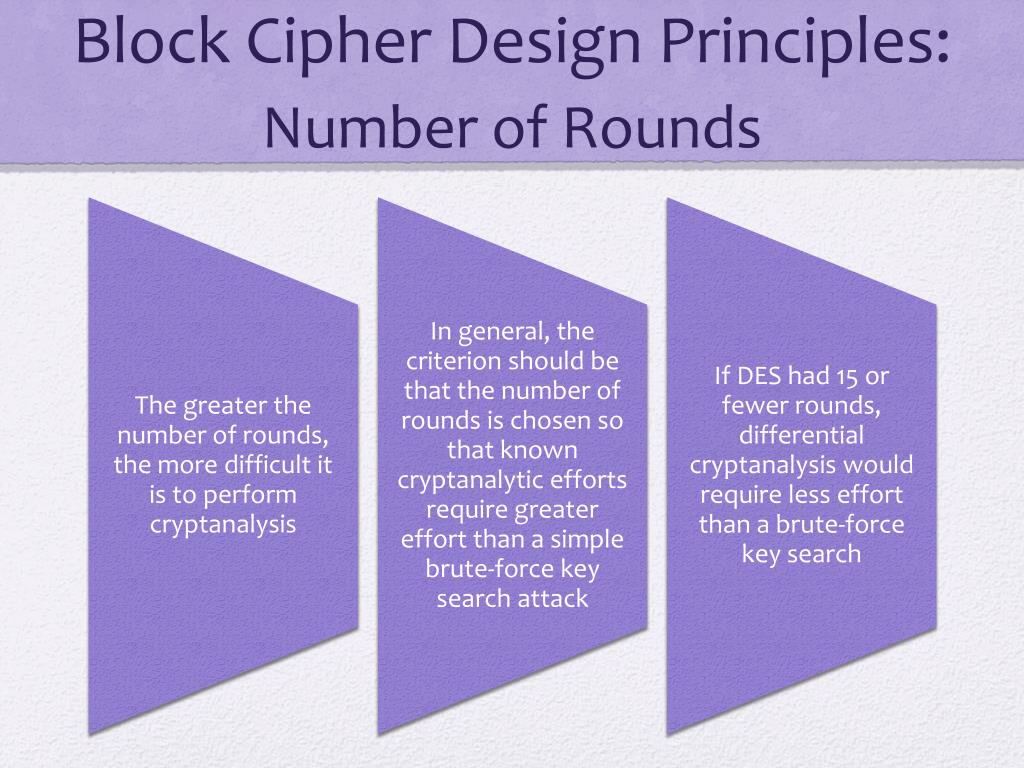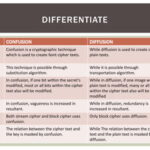In the realm of cryptography, the efficacy of a cipher is often assessed through its resistance to attacks and its capability to obscure plaintext into ciphertext. One pivotal factor influencing this efficacy is the number of rounds in a cipher. Rounds are integral iterations wherein the encryption algorithm modifies the plaintext using various operations that contribute to security. But how does the number of rounds truly affect cipher security? Can too many rounds lead to diminishing returns? These inquiries merit thorough examination.
At the core of any block cipher lies the fundamental principle of confusion and diffusion, concepts pivotal to scrambling the relationship between the plaintext, the ciphertext, and the key. Modern block ciphers such as AES (Advanced Encryption Standard) and DES (Data Encryption Standard) exemplify this mechanism. The number of rounds dictates the frequency at which these transformations occur, thereby shaping the resilience of the cipher against cryptanalytic attacks.
To comprehend the relationship between the number of rounds and security, it is essential first to define what constitutes a ’round.’ Each round typically includes several operations such as substitution (where bits of plaintext are replaced with bits derived from the key), permutation (where bits are shifted around), and mixing (where the effects of the key are blended into the data). As these operations proliferate through successive rounds, the encrypted output diverges significantly from the input.
Analyzing the balance between the number of rounds and security reveals a nuanced landscape. In principle, increasing the number of rounds enhances security, as it complicates potential attack vectors. However, this is not a straightforward linear relationship. If a cipher possesses a high number of rounds, one might postulate that it will be almost impregnable. Yet, this intuitive assumption must be moderated with analytical scrutiny.
Consider the notion of computational efficiency. Each added round involves additional processing overhead. The extent of this overhead can vary dramatically depending on the architecture and implementation practices. For instance, an intricate cipher structure with an excessive number of rounds can lead to performance bottlenecks, particularly in systems where speed and resource efficiency are critical.
This raises a compelling challenge: what constitutes the optimal number of rounds? In a cipher like DES, which employs a mere 16 rounds, vulnerabilities have emerged that thwart security in today’s computational landscape. Conversely, AES utilizes 10, 12, or 14 rounds depending on the length of the key (128, 192, or 256 bits), effectively balancing security with performance. It becomes evident that the optimal number of rounds varies based on many factors, including the algorithm’s design and the threat model.
Moreover, the specific cryptanalytic attacks that threaten ciphers must be considered. For example, differential cryptanalysis exploits patterns in the differences between pairs of plaintexts and their corresponding ciphertexts. In this context, ciphers must possess a sufficient number of rounds to disrupt these patterns effectively. By contrast, linear cryptanalysis operates by approximating the relationship between the plaintext, ciphertext, and key bits through probabilistic methods. Each iteration of rounds must be robust enough to counter these analytical approaches.
The trade-off between the number of rounds and plausible security can lead to numerous experimental designs and implementations. Notably, researchers and cryptographers engage in rigorous testing and simulation to ascertain the minimum rounds necessary to thwart emerging threats without unnecessary computational strain. This empirical approach transforms theoretical musings into actionable insights, allowing practitioners to refine encryption standards and bolster data protection protocols.
In a practical context, consider how this relationship plays out in ubiquitous consumer electronics. Smartphones, laptops, and secure communications rely on sophisticated encryption techniques. Users often prioritize convenience, yet they remain largely unaware of the underpinning security measures. If a device uses an older cipher with an inadequate number of rounds, its susceptibility to contemporary attack methodologies significantly escalates. Thus, the inquiry does not remain academic; it has tangible repercussions for everyday technology users.
Heightening the conversation around cipher rounds also brings forth a multitude of recent findings and ongoing research into alternative cryptography methods such as post-quantum cryptography. With the advent of quantum computing, existing ciphers could be rendered vulnerable to entirely new attack paradigms. This evolving landscape beckons the cryptographic community to continually reassess optimal configurations, including the number of rounds necessary for robust security against future threats.
In conclusion, while the number of rounds in a cipher is a fundamental determinant of its security, the interplay between rounds, computational efficiency, and emerging threats creates a complex tapestry of considerations. From enhancing resistance against cryptanalytic attacks to evaluating performance in practical applications, the question of how many rounds are ‘just right’ remains ever-evolving. In navigating this terrain, cryptographers must maintain vigilance, adaptability, and a penchant for innovation. As the landscape of cryptography shifts, ensuring security through sound design principles remains paramount.









Leave a Comment